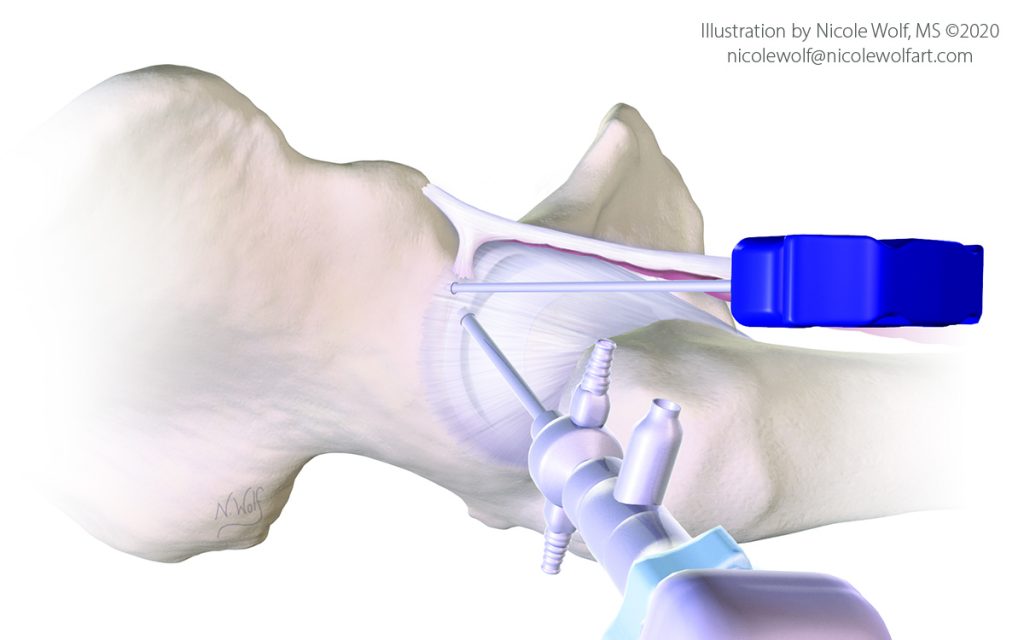Patients with moderate cartilage injury undergoing arthroscopic acetabular labral repair with BMAC application reported significantly greater functional improvements when compared with similar patients without BMAC application.
Martin SD, Kucharik MP, Abraham PF, Varady NH, Meek WM, Nazal MR. Functional Outcomes of Arthroscopic Acetabular Labral Repair with and without Bone Marrow Aspirate Concentrate. JBJS. [Published Online Ahead of Print 2021 Oct 14]. doi.org/10.2106/JBJS.20.01740 PMID: 34648479
Abstract
Background: Osteoarthritis (OA) of the hip is a debilitating condition associated with inferior outcomes in patients undergoing hip arthroscopy. To provide symptom relief and improve outcomes in these patients, bone marrow aspirate concentrate (BMAC) has been applied as an adjuvant therapy with the hope of halting progression of cartilage damage. The current study examined the clinical efficacy of BMAC application in patients undergoing arthroscopic acetabular labral repair by comparing patient-reported outcome measures (PROMs) between groups with and without BMAC application.
Methods: Patients who received BMAC during arthroscopic acetabular labral repair from December 2016 to June 2019 were compared with a control cohort that underwent the same procedure but did not receive BMAC from November 2013 to November 2016. Patients in both cohorts were asked to prospectively complete PROMs prior to surgery and at 3, 6, 12, and 24-month follow-up intervals; those who completed the PROMs at enrollment and the 12-month follow-up were included in the study. An a priori subgroup analysis was performed among patients with moderate cartilage damage (Outerbridge grade 2 or 3). The analyses were adjusted for any differences in baseline factors between groups.
Results: Sixty-two patients with BMAC application were compared with 62 control patients without BMAC application. When compared with the no-BMAC cohort, the BMAC cohort did not report significantly different mean International Hip Outcome Tool-33 (iHOT-33) scores at any postoperative time point. However, when patients with moderate cartilage damage were compared across groups, the BMAC cohort reported significantly greater mean (95% confidence interval) scores than the no-BMAC cohort at the 12-month (78.6 [72.4 to 84.8] versus 69.2 [63.3 to 75.2]; p = 0.035) and 24-month (82.5 [73.4 to 91.6] versus 69.5 [62.1 to 76.8]; p = 0.030) follow-up. Similarly, these patients reported greater score improvements at 12 months (37.3 [30.3 to 44.3] versus 25.4 [18.7 to 32.0]; p = 0.017) and 24 months (39.6 [30.4 to 48.7] versus 26.4 [19.1 to 33.8]; p = 0.029).
Conclusion: Patients with moderate cartilage injury undergoing arthroscopic acetabular labral repair with BMAC application reported significantly greater functional improvements when compared with similar patients without BMAC application.
Level of Evidence: Therapeutic Level III.
